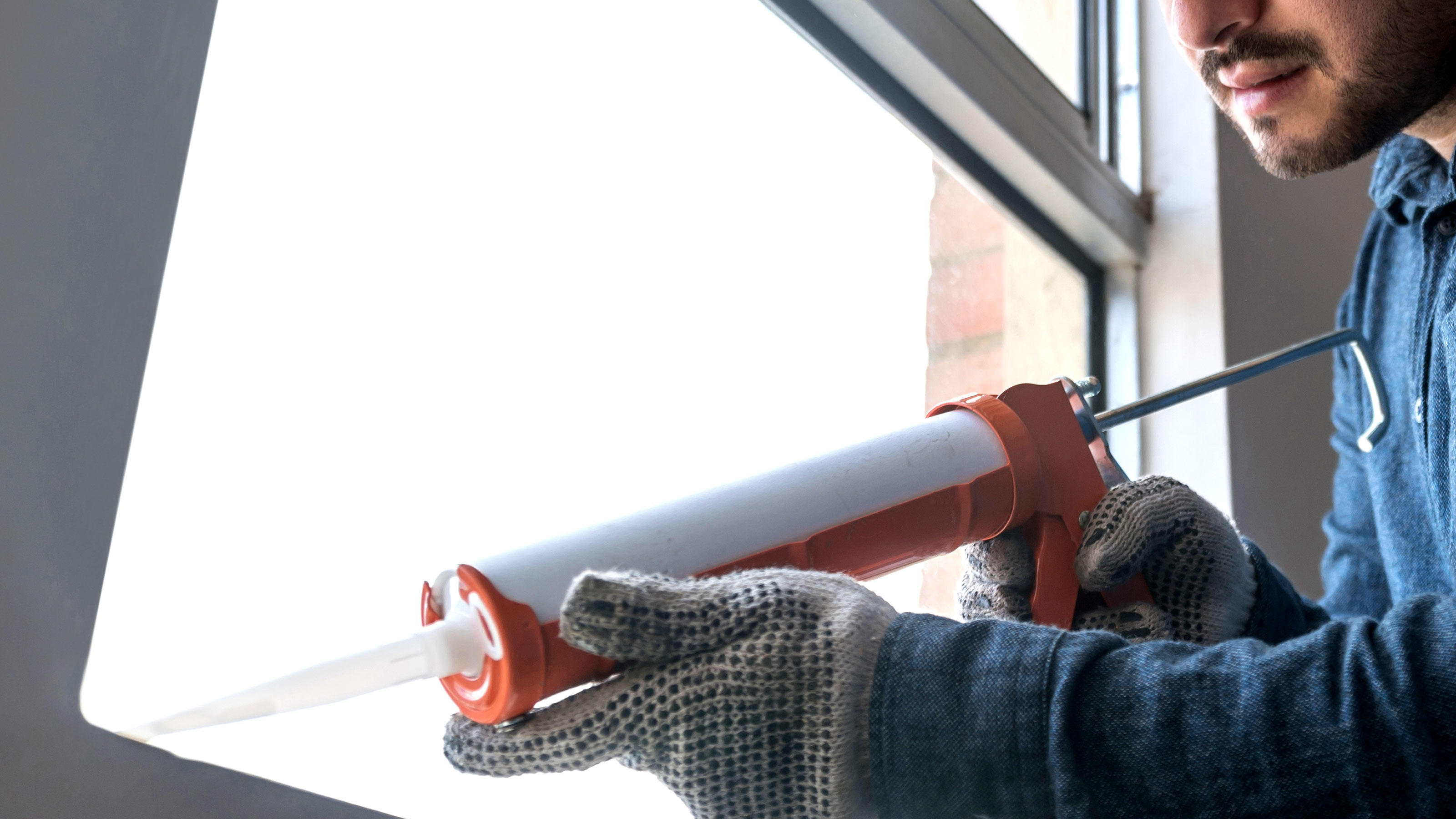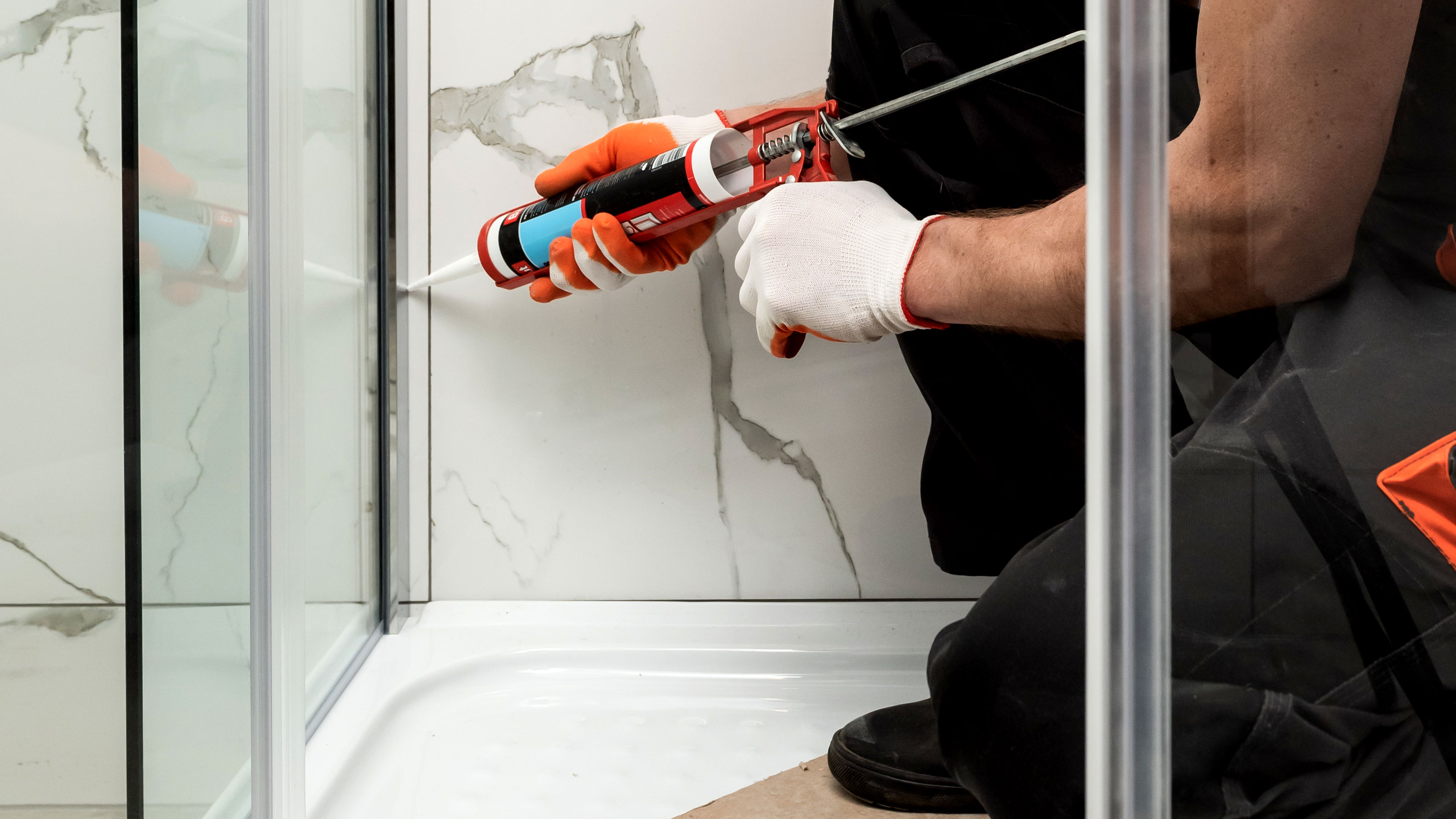How long does silicone take to dry? We give you the answer
How long does silicone take to dry? We let you know how long you should wait before working on your chosen sealant

'How long does silicone take to dry?' is a common question when working with silicone. The same applies to caulk.
Knowing the drying times of sealants is one of the key components to a successful job. Get your timings wrong and you could have to start all over again, and no-one wants that.
When applying silicone or caulking you don’t have a lot of time to finish it before it becomes impossible to work. Once it goes past the workable stage you won't be able to change the shape or look. Then you need to make sure that you wait long enough before it is exposed to water.
Here we give you the lowdown on how long you have for shaping the sealant and how long before it can be used as intended.
How long does silicone take to dry before I can shower?
A silicone or caulk sealant is typically touch dry within an hour. This means that no dust or debris will stick to the sealant after this point. You will be able to brush off dust to keep clean, but it needs to be left longer before water can fall on the sealant.
When siliconing a shower the sealant will need to be left for at least six hours, but it is best to wait until it is fully dry – or cured – before it should be exposed to running water. This typically takes 24 hours.
How long before silicone sets?
Once silicone or caulk has been applied you have around 10-20 minutes before it gets to the point where it becomes unworkable. You may have less time depending on what type of silicone or caulk you are using. Check the manufacturer’s recommendation on drying times.
Once it gets to the point where it cannot be tooled, you will have to leave the sealant in the state that it has been applied. If this is in an area where the sealant needs to be watertight you may have to remove and start again.

Does silicone take longer than caulk to dry?
Typically the drying times for the best bathroom sealants and decorators caulk are very similar. Standard sealant is touch dry in an hour and usable in 5-6 hours. But you can buy fast setting or quick drying versions
These can be touch dry in 20 minutes and usable within an hour, but you will need to tool or shape them within five minutes of applying. If possible, it is still worth leaving a sealant for 24 hours before working with it.
Can you speed up silicone/caulk drying times?
There are a couple of simple options that will help speed up drying. First make sure that the sealant isn’t applied too thickly. If doing the job properly you won’t have too much sealant and it will dry quicker. Alternatively use a quick drying sealant.
Once applied you can speed up the drying time by making sure a window is open to help air circulate and introduce a fan to push the air around the room.
What is the difference between silicone and caulk?
Both are sealants, both are waterproof and both are used to fill small gaps, but while both are similar they have slightly different qualities.
Silicone is more flexible than caulk and is typically used for siliconing a shower or bathroom. The flexible nature of silicone means that it keeps its seal even when a bath is filled with water unlike a filler that would crack.
Caulk is used for caulking skirting boards, doors windows and architraves. It is still flexible but not as flexible as silicone. It is used to fill small gaps quickly and when dry can be painted over.
Get the Homebuilding & Renovating Newsletter
Bring your dream home to life with expert advice, how to guides and design inspiration. Sign up for our newsletter and get two free tickets to a Homebuilding & Renovating Show near you.
Steve Jenkins is a freelance content creator with over two decades of experience working in digital and print and was previously the DIY content editor for Homebuilding & Renovating.
He is a keen DIYer with over 20 years of experience in transforming and renovating the many homes he has lived in. He specialises in painting and decorating, but has a wide range of skills gleaned from working in the building trade for around 10 years and spending time at night school learning how to plaster and plumb.
He has fitted kitchens, tiled bathrooms and kitchens, laid many floors, built partition walls, plastered walls, plumbed in bathrooms, worked on loft conversions and much more. And when he's not sure how to tackle a DIY project he has a wide network of friends – including plumbers, gas engineers, tilers, carpenters, painters and decorators, electricians and builders – in the trade to call upon.

